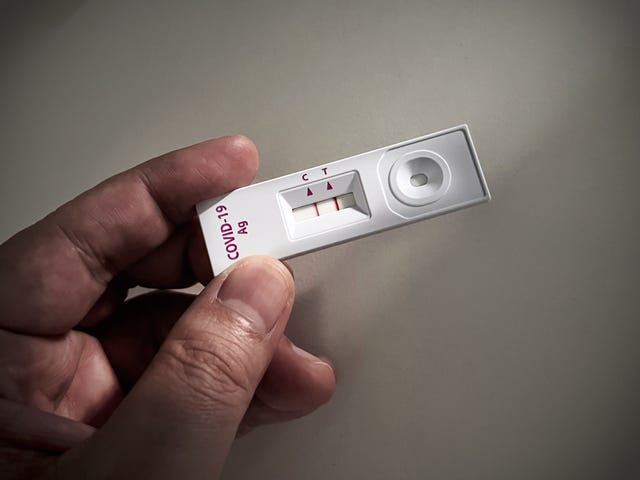
Calvin Chan Wai MengGetty Images
We’re two years into the Covid-19 pandemic and if you’re exhausted just trying to keep up with the latest variants, we don’t blame you. As regions around the country begin to ease up on whatever restrictions are even still in place, just a glimpse of the daily headlines will show that this is still far from over. Between Delta, Omicron, and the original strains, it’s all made most of our heads spin.
By now, there’s a good chance you may have heard about one of the latest new phenomenons known as “stealth omicron.” And unfortunately, this isn’t just a case of another variant that tends to leave you without any symptoms, as its moniker may imply.
According to experts, this is actually referring to a new omicron variant that has proven to frequently be mistaken for the Delta variant via PCR testing. And as regions all across the country begin to ease the few mask mandates that remain, we can understand why this new development may cause concern. Not only that, but research is showing that this new variant is the most transmissible one to date, even more so than the original Omicron variant, and it’s accounting for a significant proportion of reported cases in the dozens of countries where it’s popping up.
While we hate to be the bearer of even more bad news, this new variant appears to be able to spread as rapidly as the OG omicron. Here’s what you need to know about this latest development in the ongoing Covid-19 pandemic.
What exactly is ‘stealth Omicron?’
According to Manish Naik, M.D., internal medicine physician at Austin Regional Clinic in Austin, Texas, this variant, which has been formally recognized by the World Health Organization, has the official name “BA.2,” whereas standard omicron is referred to as “BA.1.” BA.2 was initially detected in Canada, Australia, the U.K., and South Africa in December, and a few cases have more recently been discovered in the U.S., he says.
“Omicron is very contagious and, according to Danish scientists, the BA.2 variant is slightly more contagious (1.5 times) than the first Omicron strain,” Dr. Naik explains. “While it appears that BA.2 does not cause more severe disease, COVID could linger longer in our community due to this new Omicron strain.”
Stealth Omicron symptoms
As far as new symptoms go, you don’t have to worry much about stealth omicron. New studies are showing that its symptoms are generally the same as other variants and remain mostly mild to moderate flu-like symptoms, especially if vaccinated.
How to protect yourself against stealth Omicron
The good news, however, is that Omicron cases have waned after its predicted January peak and will hopefully continue to trend downward. Not only that, but the available vaccines appear to be effective against this variant, especially for those who received a booster shot, Dr. Naik says. In fact, a recent CDC report that examined hospital ER and urgent care center data found that vaccine effectiveness against ER visits and hospitalizations was higher after the third dose (i.e. a booster shot) than after the second dose, though effectiveness appeared to wane after four months, which may possibly later signal a need for another booster dose in the future.
If you’re worried, get vaccinated.
It may seem like the world will never return to the normal we once knew in the “before times,” and Dr. Naik says that’s not that far off from the truth. But the bottom line is that staying on top of vaccine guidelines and recommendations, along with continuing to stay home if you feel sick and regularly wash your hands, are the best things you can do to stay healthy and live your life.
“Covid is not going away and the best way to protect yourselves and your family is to get vaccinated and boosted,” he says.
This content is created and maintained by a third party, and imported onto this page to help users provide their email addresses. You may be able to find more information about this and similar content at piano.io


Comments are closed.